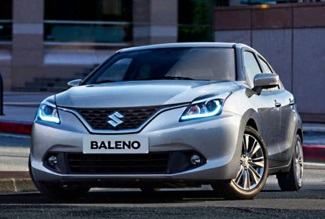
Tailpipe C02 (g/km)
118
Average (Hatch body type) 157^
0
500
Average (All body types)215 *
0
500
^The average tailpipe carbon dioxide is calculated for vehicles of a similar body type, using emissions data reported in the Australian Government's Green Vehicle Guide database.
*The average tailpipe carbon dioxide is calculated across all body types, using the emissions data reported in the Australian Government's Green Vehicle Guide database.
Tailpipe C0 2 (g/km)
Tailpipe Carbon Dioxide (CO2) – indicates the vehicles CO2 emissions in grams per kilometre (g/km). These details are the result of standardised lab testing submitted by vehicle manufactures to the Australian Government’s Green Vehicle Guide.
Results are presented in the following three categories:
Combined (calculated to display the VESR star rating)
This category provides a figure which is a distance-weighted average of the Urban and Extra test phases.
Urban
This category tests the vehicle at a low average speed where conditions are typically stop-start traffic and engine idling.
Extra
This category tests the vehicle at a high average speed where conditions are typically at a constant speed.
The results produced in lab testing are a useful guide to understanding Vehicle Carbon dioxide (CO2) emissions but do not simulate all possible real world driving conditions. Actual emissions produced may vary according to traffic and road conditions based on the condition of the vehicle and how it is driven.
Annual petrol cost
$1,428
Average (Hatch body type) $1,895^
$0
$7,500
Average (All body types) $2,476*
$0
$7,500
Edit annual cost calculation parameters
The VESR calculator has an example diesel price set as $2/L. You can edit the VESR calculator and change the example diesel price.
The VESR calculator has an example petrol price set as $2/L. You can edit the VESR calculator and change the example petrol price.
The VESR calculator has an example electricity price set as $0.350/kWh. You can edit the VESR calculator and change the example electricity price.
You can edit the VESR calculator and change the example price and annual travelling distance.
^The average annual cost is calculated for vehicles of a similar body type, using energy consumption data reported in the Australian Government's Green Vehicle Guide database, and the kilometres, fuel and electricity prices set in the VESR calculator.
*The average annual cost is calculated for vehicles of all body types, using energy consumption data reported in the Australian Government's Green Vehicle Guide database, and the kilometres, fuel and electricity prices set in the VESR calculator.
Annual petrol cost
Estimated annual costs are calculated using the default values set in the VESR calculator and based on a vehicle travelling 14,000 km in a year. Select Edit to adjust the default price and annual travelling distance in the VESR calculator to reflect your personal circumstances.
The cost calculation for each engine type is:
Internal Combustion Engine (ICE) vehicles:
Annual energy cost ($) = L per km (fuel consumption Combined in L per 100km ÷ 100) x distance travelled per year (km) x average price per L ($)
Hybrid Electric Vehicles (HEV):
Annual energy cost ($) = L per km (fuel consumption Combined in L per 100km ÷ 100) x distance travelled per year (km) x average price per L ($)
Plug in Hybrids (PHEV):
Annual energy cost ($) = Energy cost per km ($) x distance travelled per year (km).
Energy cost per km ($) = L per km (fuel consumption Combined in L per 100km ÷ 100) x average price per litre ($)+ kWh per km (electricity consumption in kWh per 100km ÷ 100) x average price per kWh ($)
Electric Vehicles (BEV):
Annual energy cost ($) = kWh per km (electricity consumption in kWh per 100km ÷ 100) x distance travelled per year (km) x average price per kWh ($)
Fuel consumption
(L/100km)
Fuel consumption
Fuel consumption - indicates the vehicle’s fuel consumption in litres of fuel per 100 kilometres (L/100km). These vehicle details are the result of standardised lab testing submitted by vehicle manufactures to the Australian Government’s Green Vehicle Guide.
The results produced in lab testing are a useful guide to understanding vehicle fuel consumption although do not simulate all possible real world driving conditions. Actual fuel consumption may vary according to traffic and road conditions based on the condition of the vehicle and how it is driven.
5.1
6.3
4.4
Electricity
consumption
Electricity consumption
Electricity consumption – indicates the vehicle’s electricity consumption in kilowatt hours per 100 kilometres (KWh/100km). These vehicle details are the result of standardised lab testing submitted by vehicle manufactures to the Australian Government’s Green Vehicle Guide.
The results produced in lab testing are a useful guide to understanding expected driving range but do not simulate all possible real world driving conditions. Actual driving range may vary according to traffic and road conditions based on the condition of the vehicle and how it is driven.
N/A
Electric range
(variable)
Electric range (variable)
Electric range (variable) - Indicates expected driving range per kilometre (km) when fully charged. These vehicle details are the results of standardised lab testing (NEDC drive cycle) submitted by vehicle manufactures to the Australian Government’s Green Vehicle Guide.
The results produced in lab testing are a useful guide to understanding expected driving range although do not simulate all possible real world driving conditions. Actual driving range may vary according to traffic and road conditions based on the condition of the vehicle and how it is driven.
N/A
Vehicle details
Vehicle details
Vehicle details are reported by manufacturers to the Australian Government. Vehicle data is drawn under license from the Australian Government’s Green Vehicle Guide.
4 door, 5 seat Hatch
5 spd Manual
1.4L 4cyl Normal Petrol 91RON
2 WD


